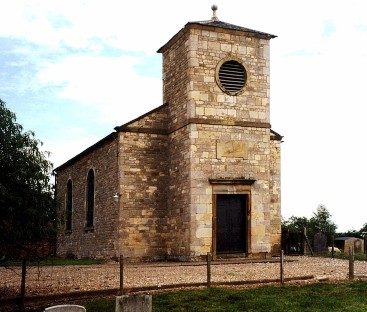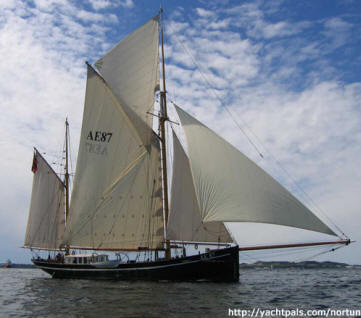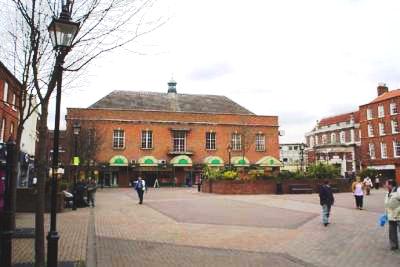Dear Donald,
| BIG BILL |
Ray Jerrems, Our Genealogist, and Historian
Do I here the query from new readers “who on earth is Big Bill?”.
Seasoned readers will know that over a period of years I have referred to Big Bill, this being my nickname for my great great great grandfather. The name first appeared as far back as the Thanksgiving Journal of 2005 and I have used it in a number of later Journal articles and “Emails From Heaven”.
Big Bill (born in 1782) is in fact our first really tangible “Jerrems” ancestor because the only record of his grandparents William and Cecelia Jerom and his parents William and Mary Jerrems have been in church archives. However Big Bill is different because over the years I have turned up a number of pieces of information about him, culminating recently in newspaper extracts from the National Museum collection provided to me by Alan Fitz-Patrick, a fellow descendant of Big Bill.
The result is that I think that it would now be appropriate to collate all that information into a chronological sequence. To do him justice there will be more than one article. You will be surprised at the variety of interesting things that he did during his long and quite illustrious career.
In this process I will, as usual, provide insights into the era in which he lived in rural England.
| Why do I call him “Big Bill”? |
This nickname arose from an historical reference to him:
“Here is old Jerrems, the Parish Constable, massive and dignified, for he weighs almost eighteen stone; almost a Mayor and a Corporation in one! He is well able to keep all the Gainsborough lads in order, to inspect the sewers, and to manage his farm at Willingham in his spare time”.
Eighteen stone is around 130 kilos. Big Bill must have tested a lot of his cream biscuits when he was a grocer!

Big Bill was born in Willingham in 1782, his parents being William and Mary Jerrems. Willingham is about 10 km (six miles) south of Gainsborough. He was baptised at St Helens Church at Willingham (see photo).
Education
Although there was no school in Willingham until 1818 it is very likely that some children were taught by educated locals (including mothers) in homes. A case in point is Big Bill, who must have received a good elementary education (possibly from his mother) because later he was a grocer.
When and why did Big Bill leave Willingham?
Big Bill (at the age of 23) is listed in the 1805 Gainsborough Trade Directory as a grocer and tea merchant in the firm of Jerrems and Metcalfe, so he probably left Willingham in 1802 or 1803, but it could have been earlier.
The reason why he left an attractive little town like Willingham where his family had lived for at least 80 years is of course a matter of conjecture. The recent land closures would have had a significant effect on the local economy, and a disruptive effect on the morale of the residents, but probably he simply left to become a grocer in Gainsborough because Willingham already had a grocer (perhaps his father).
By opening a shop by the age of 22 it could be assumed that he had been an apprentice and already gained a lot of experience in this area.
| Marriage |

As described in detail in the Jerrems Journal of October 2009, Big Bill married Elizabeth Clarke (born 1781 in nearby Newball) in January 1805 in St John The Baptist’s Church, which was perched on a hill at Stainton By Langworth. In due course they had twelve children between 1806 and 1824, although only eight of the children reached adulthood.
Gainsborough at that time
Gainsborough’s population was about 2000 when Big Bill moved from Willingham, compared with Willingham’s modest population of about 230. Although Willingham’s population increased gradually the population of Gainsborough was soon to increase significantly.
Gainsborough had petitioned long and hard for a customs house to be set up in the town, but it was not until 1820 that this request was granted. This would have had a significant effect on the town because it would have tapped into the river trade on the River Trent. The captains and crews of cargo boats awaiting processing at the customs house would have taken the opportunity to restock their provisions, go into town for entertainment and perhaps have their vessels careened and re-caulked at the nearby shipyards.
Big Bill would have tapped into this lucrative trade. In addition to his 1805 listing, he is listed in a 1830 town directory as Grocer and Tea Dealer in Silver Street and in the 1841 Census and the 1844 town directory as a grocer, but he must have retired from this soon after (as explained in a later article).
The River Trent
The River Trent is one of the major rivers of England. Its source is in Staffordshire. It flows through the Midlands, past Gainsborough, until it joins the River Ouse at Trent Falls to form the Humber Estuary, which empties into the North Sea below Hull.
With Gainsborough being at the tidal limit it meant that river depths were guaranteed up to that point.
At certain times of the year, the lower tidal reaches of the Trent experience a moderately large tidal bore or wave (up to five feet (1.5m) high), commonly known as the Trent Aegir (named for the Norse sea god). The Aegir occurs when a high spring tide meets the downstream flow of the river. The funnel shape of the river mouth exaggerates this effect, causing a large wave to travel upstream as far as Gainsborough.
| Tokens |

Readers of earlier Journals will remember that Big Bill had the innovative idea of minting tokens in 1810, slightly over two centuries ago.
The background to this was that in the early 1800s there was a coin shortage in England, so some shopkeepers showed a lot of initiative by issuing their own coins or tokens. Big Bill was one of them.
Here is a photograph of the first coin, it was originally provided by Jerry Jerrems V, who has one of the coins. Jerry inherited the coin from his grandfather “Jerry III” upon his death in 1968.
The coin, minted by Henry Morgan in London, was about the size of a dollar. For the sake of simplicity I will call it a “coin” although it is more precise to call it a “token” because it was not an official Government coin.
The purpose of the coin was that a person presenting the coin at Big Bill’s shop was entitled to receive goods of value up to one shilling, quite a lot of money in those days. You have probably seen a “token” system used at some stage in stores. It is similar in principle to a gift voucher.
No doubt it had the additional advantage of attracting business for Bill. Obviously he saw the idea as being commercially viable despite the cost of minting the coins, including the cost of the silver.
The second token
The first coin must have been a success because the next year Bill issued another one, in conjunction with two other people, possibly to defray the production costs. A pound note was paid for 12 of the coins, a higher value per coin than the previous coins.
We do not have a photo of this coin so we have to rely on the description in a book, where it is described as having on one side the words “A POUND NOTE WILL BE PAID FOR 12 OF THESE, PAYABLE BY E. DAWSON, MANSFIELD; W. JERREMS, GAINSBOROUGH; J HEDLEY, LYNN, NORFOLK; H MORGAN, LONDON,1812.”
Mansfield is 60 km south west of Gainsborough, and is about 12 miles (19 km) north of Robin Hood’s Nottingham, which is in the navigable section of the River Trent upstream of Gainsborough. Lynn (now known as King’s Lynn) is a sea port on the east coast, 130 km south east of Gainsborough.
It is difficult to see any connection of Dawson and Hedley with Big Bill, perhaps the minter, Henry Morgan, suggested that the trio join up in the venture.
| Bill was a man of initiative |

Big Bill showed great initiative in having both coins minted in London, because he would have had to go to London to have them designed and minted, a distance of 240 km by road. This would probably have involved a minimum of a two day trip each way in a bone-rattling coach. Train lines were not constructed until almost 40 years later, and the postal services were very embryonic.
It is also possible that Big Bill travelled to London by cargo boat. These boats would have been rigged with triangular sails because these sails (compared with square-rigged sails) were easier to re-set on a winding river where the wind direction changed due to the change of sailing direction (see photo).
Somehow the trio must have met (probably in London) and sorted out the design of the coin, the number to be minted, and the rates of contribution etc.
Nobody could say that Bill’s contribution to coin history was only a token effort!
| Children |
At this stage Bill and Elizabeth had produced four children, Ann born in 1808 (who I have traced for several generations), William, who was born in 1810 but died in the same year, Elizabeth, born in 1810, who I recently discovered has a number of descendants in Australia, and Mary, born in 1812 but died in 1814.
Conclusion
As they used to say on a popular TV show, “that’s all for now folks”, but in a later article I will describe how Big Bill entered into a further venture in the insurance industry and embarked on the public-spirited occupation of Town Constable, which was dangerous on occasions.

